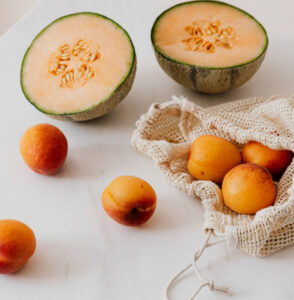Are you tired of fad diets that promise quick results but leave you unsatisfied and deprived? It’s time to break free from the shackles of modern food trends and rediscover the power of our ancestors’ Paleo diet.
This blog post will delve into the fascinating world of paleolithic nutrition and explore its numerous benefits. Get ready to return to your roots, revitalize your health, and embark on a journey toward a stronger, leaner, and more vibrant version of yourself. Let’s dive in!
What is the Paleo Diet?
The Paleo Diet is a nutritional plan that models eating habits after our hunter-gatherer ancestors from the Paleolithic era. The diet revolves around consuming whole, unprocessed foods that would have been available to humans during that time.
This includes meats, seafood, vegetables, fruits, nuts, and seeds. The idea behind the Paleo Diet is that by mimicking the eating habits of our ancestors, we can optimize our health and well-being.
There are several benefits associated with the Paleo Diet. For one, it can help to improve your overall health by providing your body with nutrient-rich foods.
The diet has also been shown to lower blood pressure and cholesterol levels and improve insulin sensitivity. Additionally, following the Paleo Diet can lead to weight loss and reduced inflammation.
Benefits of Adopting a Paleo Diet
A Paleo diet is based on the foods our ancestors ate before the advent of agriculture. A Paleo diet consists primarily of meat, seafood, vegetables, fruits, nuts, and seeds. This contrasts with the typical Western diet, which consists mostly of processed foods, grains, dairy, and legumes.
There are many benefits to adopting a Paleo diet:
- Paleo diets are rich in nutrients essential for good health.
- Paleo diets are low in unhealthy fats and high in healthy fats.
- The Paleo diet can help you lose or maintain a healthy weight.
Paleo diets can help reduce the risk of chronic diseases such as heart disease, type 2 diabetes, and some forms of cancer.
Foods to Eat on a Paleo Diet
A Paleo diet focuses on eating like our ancestors did – including lots of meats, vegetables, and healthy fats. If you’re thinking about trying a Paleo diet or already eating this way, here are some great food options to include in your meals.
Meats: When it comes to meat, you can pretty much eat anything – make sure it’s grass-fed and organic if possible. Beef, pork, chicken, lamb, turkey, and game are all great choices.
Vegetables: All vegetables are fair game on a Paleo diet, so load up your plate! The best options include broccoli, kale, spinach, carrots, sweet potatoes, and tomatoes.
Fats: Healthy fats are an important part of a Paleo diet since they help you feel satiated and provide essential nutrients. Good fat sources include olive oil, avocados, coconut oil, nuts, and seeds.
Recipes for a Paleo Diet
There are many reasons to consider following a Paleo diet, including the fact that it can help you to lose weight and improve your overall health.
But another great reason to try Paleo is that it can help you to enjoy some delicious and healthy meals! Here are just a few recipes to get you started on your Paleo journey:
Paleo Breakfast Bowl: Start your day with a nutritious and filling breakfast bowl packed with eggs, avocado, tomatoes, and spinach.
Paleo Chicken Salad: This hearty salad is perfect for lunch or dinner and is loaded with chicken, grapes, bacon, and almonds.
Paleo Salmon Cakes: These easy-to-make salmon cakes are a great way to get your seafood fix while sticking to a Paleo diet. Serve them with a side of roasted vegetables or a simple green salad.
Paleo Fruit & Nut Bars: These homemade fruit and nut bars make the perfect on-the-go snack or dessert. Enjoy them, knowing they’re packed with healthy ingredients like dates, nuts, and dried fruit.
Alternatives to the Paleo Diet
Several alternative diets to the Paleo Diet still focus on whole, unprocessed foods. These include the Whole30 diet, which is similar to the Paleo Diet but eliminates dairy and grains; the Primal Blueprint diet, which is also similar to the Paleo Diet but allows for some dairy and processed foods; and the Mediterranean diet, which includes whole grains, legumes, and dairy.
While each diet has its rules and guidelines, they all emphasize eating whole, unprocessed foods as much as possible. This contrasts with the Standard American Diet (SAD), which is heavy in processed foods, refined sugars, and unhealthy fats.
Switching to a Paleo-style diet can be a big change, so it’s important to research and find an approach that works for you. There’s no one “right” way to eat paleo, so don’t be afraid to experiment with different recipes and foods until you find a way of eating that feels sustainable for you.
Conclusion
With its focus on whole foods and natural ingredients, the Paleo Diet is a great way to reconnect with our ancestors’ diets. This diet offers numerous health benefits, such as improved digestion, better weight control, stronger immunity, and increased energy levels.
It also encourages mindful eating habits, which can help us recognize unhealthy cravings and make healthier choices. If you are looking for a simple yet effective diet that will help you lead a healthier lifestyle, the Paleo Diet may be right for you!



